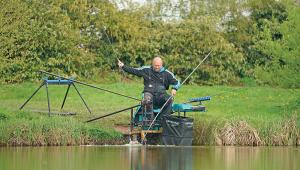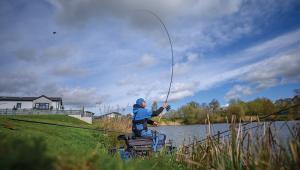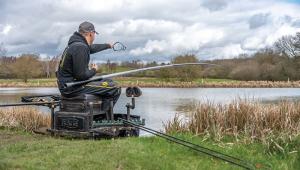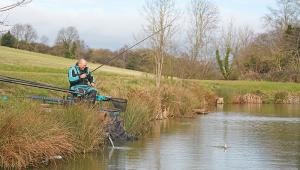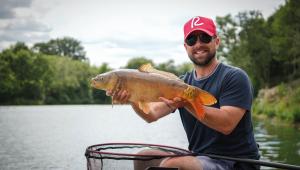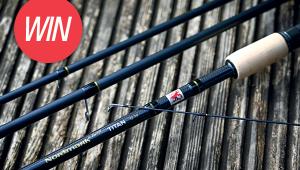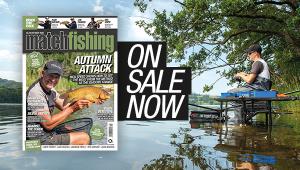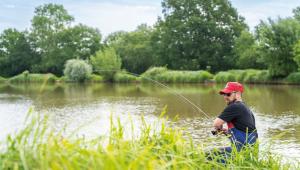River Roach On The Feeder
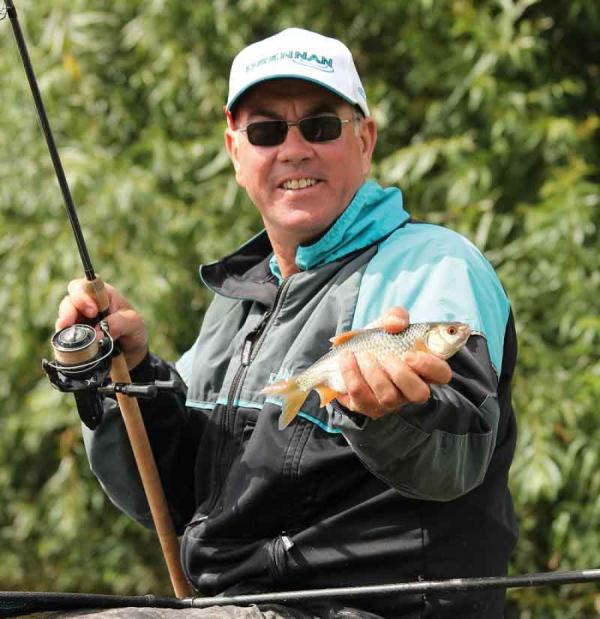
Five-time world champion Alan Scotthorne visits the mighty River Trent to demonstrate how to target river roach on the feeder.
Roach can be difficult fish to catch from stillwaters on a feeder and trying to tempt these clever fish on a river can be even more taxing. Add a tide to the equation and it becomes an even greater challenge!
This is what I am facing today on the tidal River Trent at Laughterton, in Lincolnshire. This is a river I started my angling career fishing and it has a large stock of quality roach among other species.
Things have changed from those early days, however. The water is much clearer than it ever used to be, which makes the fish even harder to catch. I am sure this is now a common problem that people will all face across Europe. Waterways are being cleaned up and chemicals play their part in clearing the water to almost tap water quality. I think this is why the fish often stay out of comfortable float fishing range so the feeder becomes a very viable method.
Tidal Considerations
Arriving at the river today the tide is already out and the river very low. Having fished the river just two days before, I knew the tide would start to fill the river back up around two hours after I had started the session. Looking where the tide mark was on the bankside I could set up with confidence, knowing that as long as my platform was level with the tide mark I would not get swamped by the incoming tide in two hour’s time.
This is really important to observe on a tidal river and you need to be very aware of the river quickly rising and falling so you don’t get caught out. It does look strange having my platform and seatbox set up four feet above the water, but this guarantees I will not have to move all my tackle further back once the tidal river starts to fill up.
Rod Positioning
On a stillwater your rod would normally be positioned so it was low down to the water. On the river, however, the flow dragging on the line is much too fierce to do this, so the only option is to have the rod pointing upwards. I use a Rive box and set an extendable rod rest facing skywards. I think a one o’clock angle downstream is the correct position when the river is running from left to right.
By positioning the rod like this it helps to keep as much of your main line out of the water as possible. This keeps bend of the quivertip down to a minimum and also allows you to use a much lighter feeder.
I also use a small rubber Drennan Non-Slip Rod Rest that helps to hold the rod in place but doesn’t catch the wind like larger rod rests, which can cause unnecessary rod movement on windy days.
My rod butt is simply placed on my seatbox top, so then everything is at hand so you can pick up on a bite.
At this point it is also worth mentioning to always wear sunglasses when watching a quivertip pointing skywards. The sun can damage your eyes, so this is a must for river feeder fishing.
Where To Fish?
Once I have set up, I then need to decide what distance I want to fish on this 80m wide river. Looking at the flow, I am sat just below an inside bend, which is pushing the flow across to the nearside bank, so the fastest current is almost a third out into the river. I have also plumbed this area by casting around with a 2oz bomb and, as I expected, it’s also the deepest part of the swim with a nice snag-free bottom – the perfect place to fish.
I never ‘clip up’ to fix my distance on a fast-paced river like this. I prefer to judge the distance on the cast rather than fishing to a line clip. The reason for this is because at times after casting you will need to create a much bigger bow in the line to help hold bottom. This cannot be achieved with a fixed line. I also like to feed an area that will hold a shoal of fish, rather than a tight spot that might keep less fish over the baited area.
Rods And Reels
Although I will potentially be using up to 3oz of lead on the feeder at times, I still don’t like too stiff a rod as my target fish are roach and I will be fishing smaller hooks and lighter lines than I would for much bigger fish.
My favourite rods for this are the Drennan 11ft 6in to 12ft 6in Medium Feeder Combo rods. I find the 11ft 6in length is perfect for normal conditions, but if I am faced with a snaggy swim I have the option of fishing with it at the longer extension if I need to get the feeder up off the bottom quickly to avoid any snags.
The longer rod also has the advantage for casting bigger distances and also can help keep even more line out of the water. These are nice options to have if I need to cast across on an outside bend where the flow and depth may be right across towards the other side.
I always use a 3oz carbon quivertip in the rod, that gives me great bite detection. When the flow is stronger I would rather have a bigger bow in the line than use a heaver tip. I never use an ordinary glass quivertip for this method because they do not react the same on drop-back bites (one of the main types of bites I am expecting to get), so stick with carbon as that tightens quicker.
I also prefer to use a Baitrunner-type reel on the river. A 4000 Shimano Aero-X gives me the chance to click on the Baitrunner facility to allow line out and increase the bow of the line to help the feeder hold bottom. I find it much smoother and easier to do with a freespool system like this than trying to backwind the line from the reel, plus you can still easily spot a bite while the line is paying out from the reel.
My reel line is Drennan 5lb Feeder & Method Mono, which is incredibly strong with just a diameter of 0.20mm. This is very important as thicker line picks up much more tow, resulting in you needing a heavier feeder to hold bottom.
The All-Important Rig
I fish this tactic with my tried-and-tested ‘semi bolt rig’ and this is very simple to set up. On to the end of the main line I thread a diamond eye swivel with a looped 5cm length of Drennan 14lb Power Gum attached to it. This is what I attach the feeder to. Next, I thread on a Drennan Swivel Stop Bead and push this up the line, then add a size 8 Cralusso Quick Snap Swivel link to the line. This has two jobs. One is to stop the hooklength from spinning and the other is to enable me to replace a damaged hooklength quickly.
With all three components on the line I then spin the line together above the swivel to create a ‘twisted boom’ and knot it off with a double overhand loop, 6cm above the swivel. I then bring the rubber stop bead down over the Quick Snap Swivel.
The diamond eye Power Gum link is now ready to attach the feeder on to. All my feeders are modified so that the Power Gum link can sit under a strip of lead on the feeder body. This means I can change to any of my feeders, from a Drennan stainless Oval Cage Feeder to a solid plastic feeder without having to break down the rig, just by lifting the lead strip up, removing the feeder and replacing it with a different choice of feeder.
Although the feeder is technically free running, so it can easily pass over the 6cm twisted boom down to the Swivel Stop Bead, the knot from the twisted boom, combined with a diamond eye swivel, helps to create a semi-bolt effect. So, when a fish takes the bait it briefly catches on this knot, which helps to dislodge the feeder and aid self-hooking.
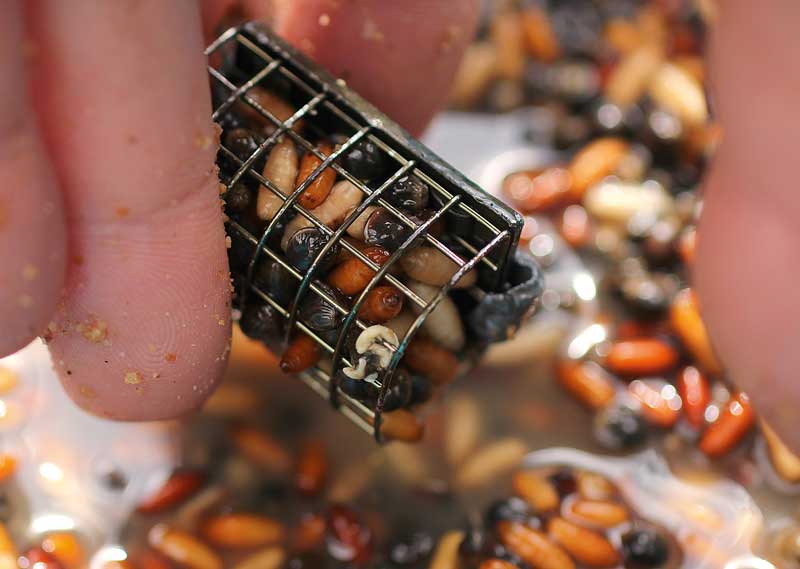
Cram as many particles into the feeder as possible…
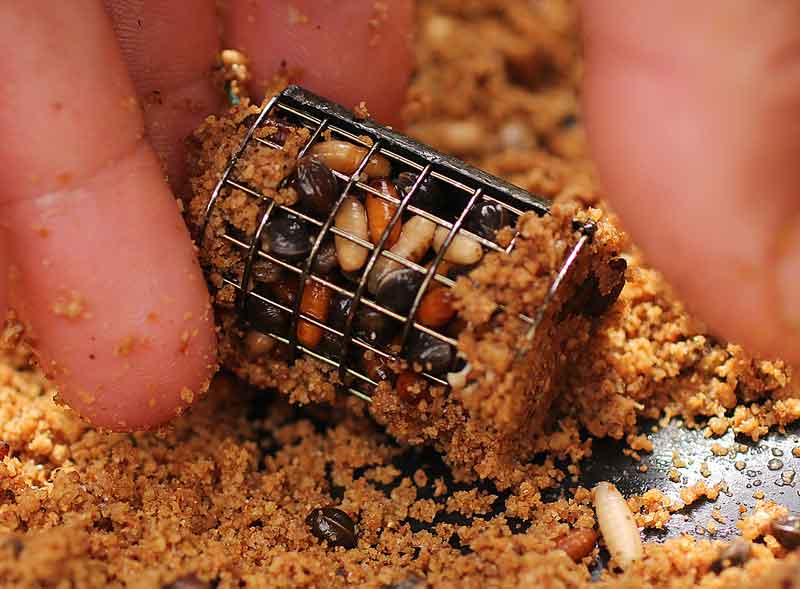
… before plugging the ends with a small amount of groundbait.
Hooklengths
I use Drennan Supplex Fluorocarbon for almost all my hooklengths, including all feeder work. I keep my longer feeder hooklengths on strips of wood that are a metre long with a nail at each end. I can then store these in tubes so they cannot get damaged in transit and just place them in my made-up rod sleeves. This keeps the fluorocarbon straight, and I am not a fan of putting long hooklengths on foam spools as it takes time to take them off the spool.
Today I have started with a metre-long 0.12mm hooklength to a size 14 very fine but strong Drennan Fine Maggot hook. This hook will house any bait I want to try and is extremely sharp, and perfect when you want the fish to hook themselves on the bite.
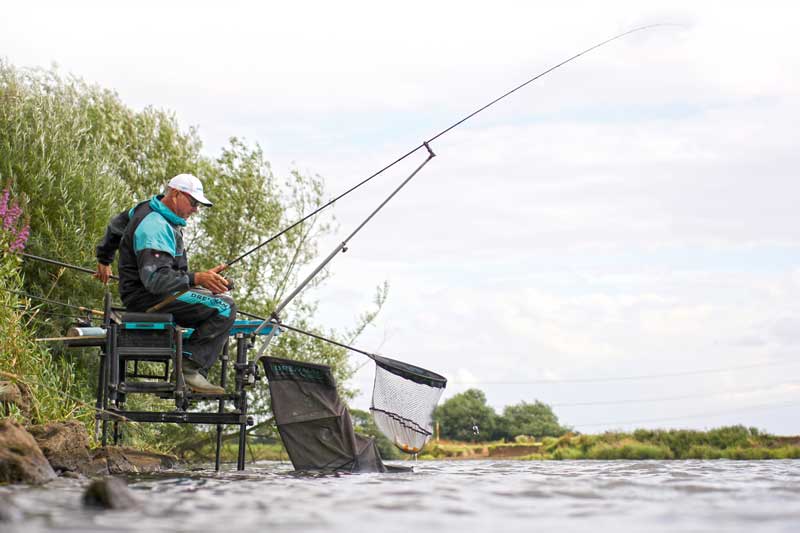
Look at the water mark on the bank, and set up your platform and box higher than this for when the tide comes back up.
Making The Best Of The Tide
With the river running very low and at the bottom of the tide I knew it would be a slow start today. After two hours I had caught just two roach using a 2oz open-ended plastic feeder but was not too worried. I still stuck to my regime of casting, waiting for 30 to 40 seconds, then retrieving the empty feeder.
Through the feeder I was feeding hemp and casters, capped off with a 50/50 mix of Sensas 3000 Magic and brown crumb. This groundbait gives off a slight cloud to help attract the roach but the main body of the feeder is packed to the limit with all-important particles.
These wild river fish are hungry and I think you must get a good amount of bait on the deck. I got through around four pints of casters and two pints of hemp in this five-hour session, which is a lot of bait just through a feeder.
Once the river started to slow and almost stopped as the tide changed I then switched to a cage feeder for a short period. This was just so the feeder would release the bait quicker. As the river started to back up and flow once more I then changed back to the solid plastic feeder.
I also dropped right down to a 0.105mm Supplex Fluorocarbon hooklength to a size 16 Super Carbon Maggot hook, with just a single caster on the hook. I will also try maggots on the hook and always create a few floating maggots, which can sometimes bring bites when all other baits fail. I make these by placing live maggots in a small covering of water. They will soon take on air, which makes them float. Just make sure you have an escape-proof lid on your bait tub!
Once the river got up to a good speed and was putting a nice bend in the 3oz quivertip I started to get more bites. Ignoring any light plucks on the tip and just picking up when the tip was bouncing I was now coming back with a fish most casts.
When I am fishing very light hooklengths I never strike; I just pick up on the bite. This is vital with such heavy feeders in the flow. Even though the roach were of a good quality I never got broken doing this today.
All the bites were now coming on the drop as soon as the feeder hit the deck. This prompted me to shorten the hooklength down to 70 centimetres and helped the fish hook themselves even better.
Just to explain a bit more how my semi-bolt rig works, the diamond eye swivel sits against the Swivel Stop Bead when the feeder is on the bottom and the hooklength trails downstream of this. The main line also heads downstream and then bows around to the quivertip. When a fish takes the bait it pulls the diamond swivel up to the knot on the double twisted line above the bead. This often dislodges the feeder, if you have the right amount of lead on the feeder to just hold bottom in the flow.
Once the fish is hooked the feeder can still come above the knot so the hooked fish is not direct to a fixed feeder when you are winding it in. Most bites with this setup are drop-back bites, but often the tip will also bounce. With a bit of experience you will soon distinguish between the feeder moving and a bite. This is also why I can fish with much lighter hooklengths, as the fish hooks itself so you don’t have to strike the hook home.
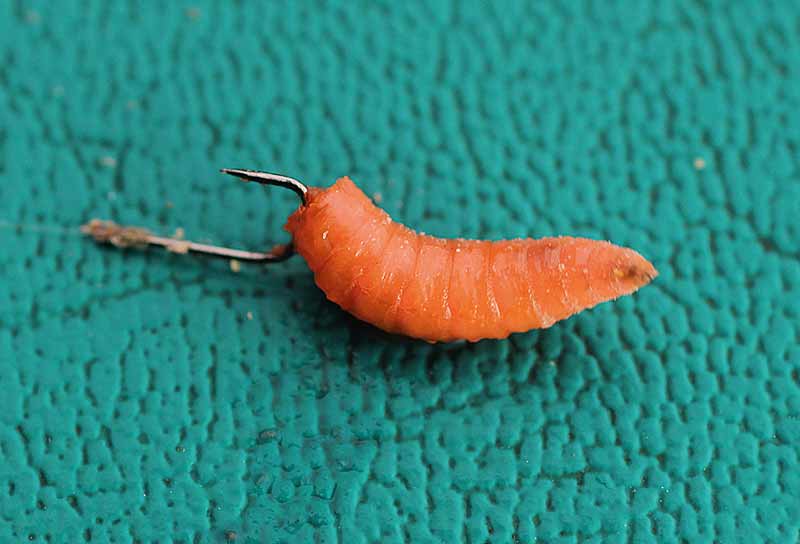
When other baits fail, a single fluoro maggot gets bites.
Changing the weight of the feeder is also most important, as you want it to be critically balanced to the flow so it just holds bottom. If the feeder is moving try making the bow in the line bigger before switching to a heavier feeder. If the feeder is still moving you will have to add more lead, as I have done today when the tide turned. Once the flow started to run out again I needed 3oz to hold bottom.
I finished the day with a cracking net of fish. Feeder fishing for roach can be so effective once you get a few simple mechanics right. I have won lots of matches using this technique and it will work on any flowing river, so get out there and give it a try!
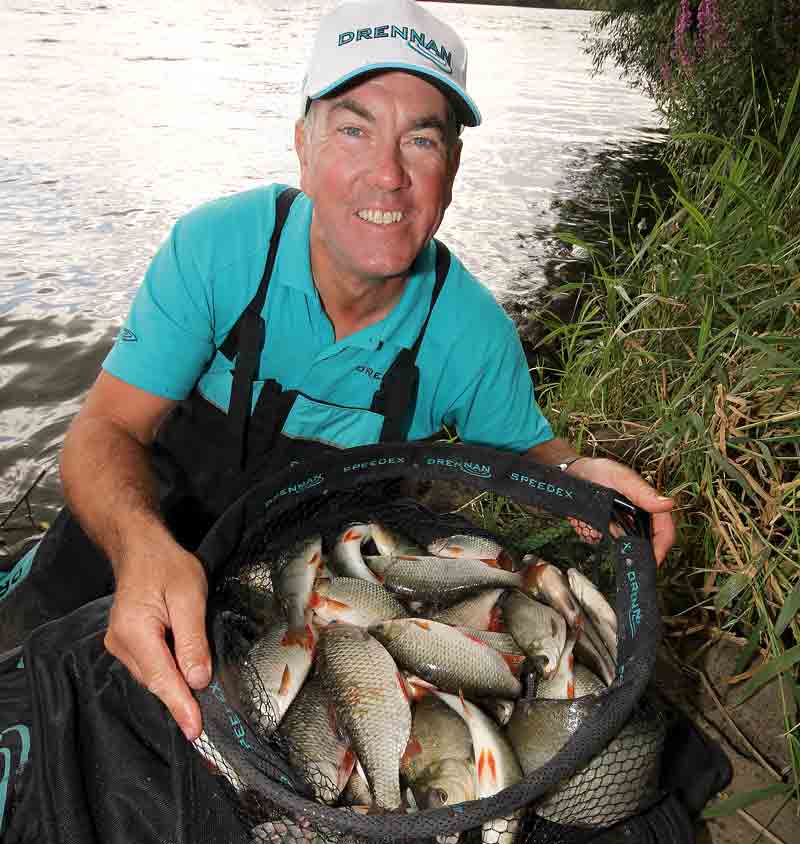
If you get it wrong on the feeder, you wouldn’t know fish like this were in your swim to catch!
Like what you see?
Or buy a single issue
- Log in or register to post comments



